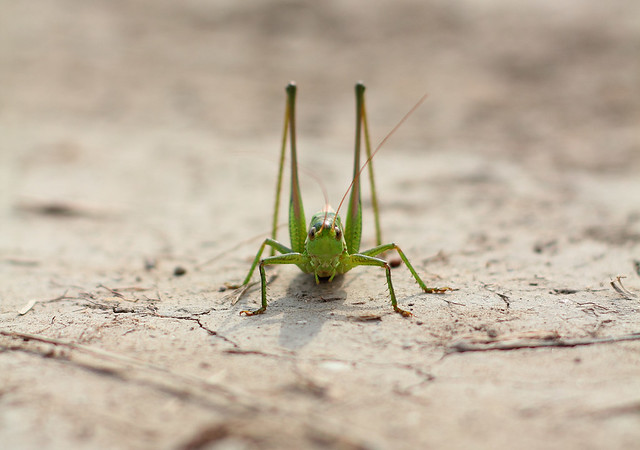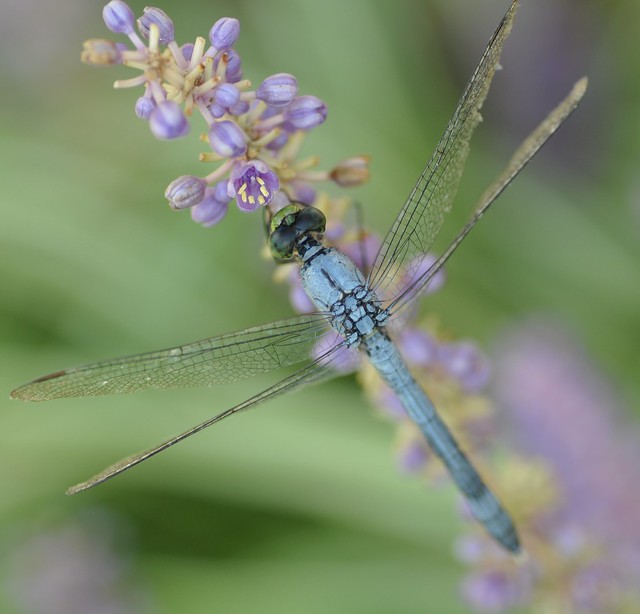Why photograph insects?
“Insect” captured by Paulo Brandao
Because:
- 75% of living creatures on the planet fall into the insect category
- They’re fascinating subjects with great natural beauty
- The “ugh” factor the insects inspire in most people prevents us from having a close up look at the real thing.
Photographing insects is a specialized field and volumes have been written on the subject. However, there are four basics you need to know when you start and once you “whys” and “how to” of these, you’ll be ready to go deeper into special effects and also start experimenting on your own. Your camera manual and articles on macro photography will tell you all you need to know about macro lenses and close up filters, so we won’t go into all that here.
1. Sharpness
Sharpness is one of the most important facets of insect photography. We’ve all seen images of flies and other insects where the minute hairs on the body are visible. Without this effect, the whole impact of the image is lost. The easiest way to ensure sharp focus is to use the auto focus option on your camera. When doing macro photography, even the slightest bit of hand shake can change the depth of field and affect the sharpness of the image, so any shake after the auto focus is complete will affect the picture. Use the normal technique of half pressing the shutter button to start the auto focus and take the picture as soon as possible. To minimize handshake, use a minimum shutter speed of 1/125 of a second.
2. Lighting
Lighting is a common problem in insect photography. Of course you can use a flash, but the problem with using a flash with macro against brightly colored plant backgrounds, which happens in most insect photography, is that the natural colors are sometimes lost. With a 1/125 of a second shutter speed, an insect that is not well lit may cause the auto focus to fail. In that case, try manual focus, and if that still doesn’t look good, go in for the flash option.

“Locust” captured by Rego Korosi
3. Background
Once you have your subject in proper focus, the next thing to do is look at the background. A blurred background will keep the attention on the insect. The easiest way to do this is to use the maximum possible zoom. A plus 10 macro lens at 84 mm focal length and a plus 4 lens at 210 mm will result in the same magnification but the latter option will produce a smooth, blurred background effect. Another thing to remember is that the greater the distance between the subject and the background, the more blurred the background becomes.
4. Framing
The final issue is framing. For the best effect, try to capture the insect from the front but at a slight angle. This will allow the head to be seen in relation to the body and keep the image in balance. With few exceptions, photos of an insect’s back are not of any great value. Keeping the insect slightly off center in the photo will yield positive results. Try using the “rule of thirds” for this.

“Om nom nom nom” captured by Erica Annie
Once you’re producing good results with these three techniques, you can start looking at experimenting on your own.
About the Author:
Peter Timko writes for Proud Photography, an online photography school.
Go to full article: Insect Photography Tips
What are your thoughts on this article? Join the discussion on Facebook
PictureCorrect subscribers can also learn more today with our #1 bestseller: The Photography Tutorial eBook
The post Insect Photography Tips appeared first on PictureCorrect.
from PictureCorrect https://ift.tt/2GY6rmI
via IFTTT






0 kommenttia:
Lähetä kommentti